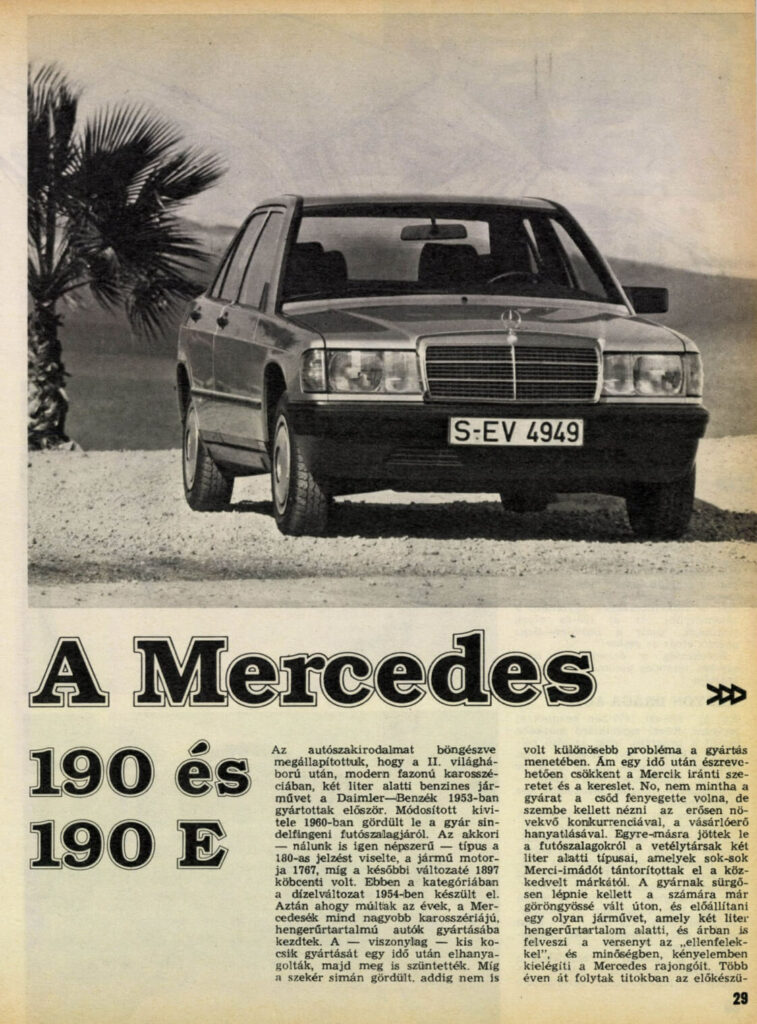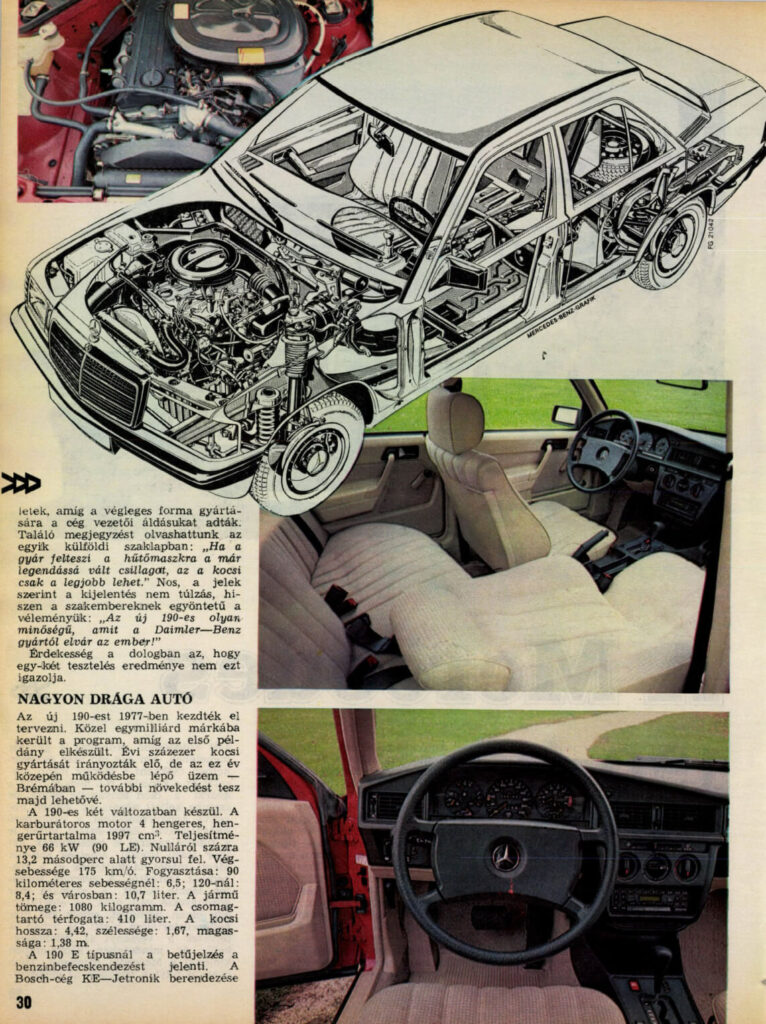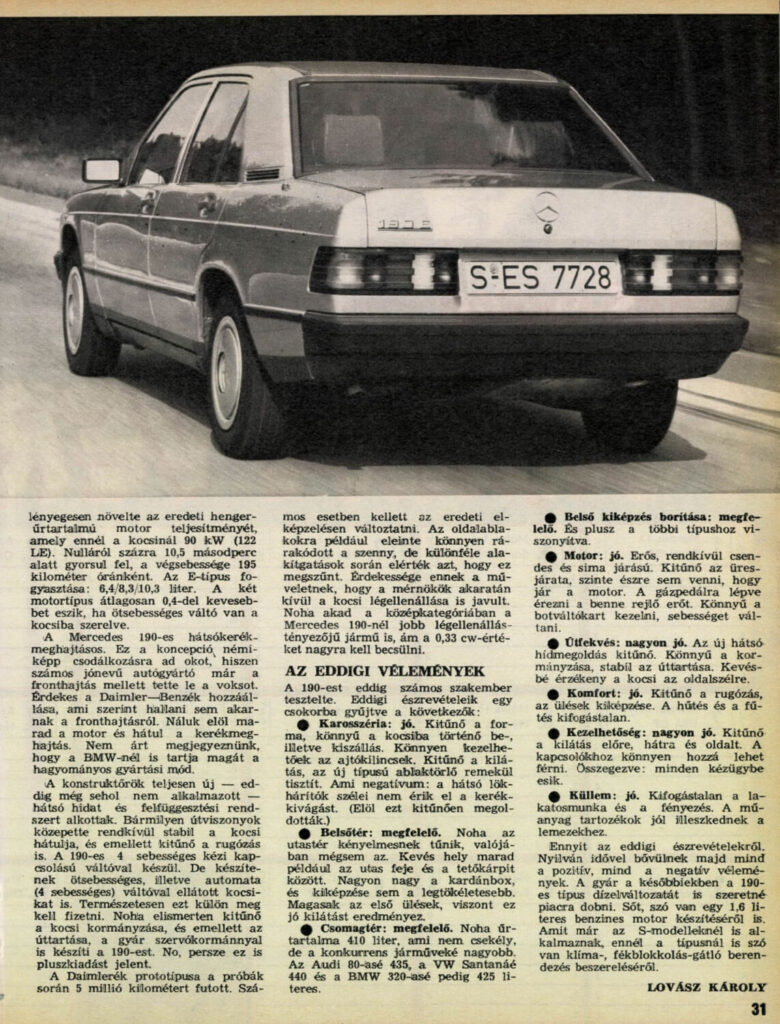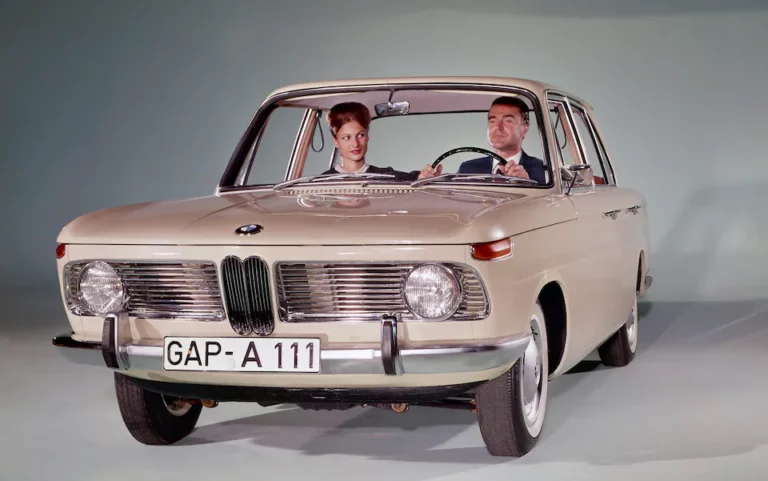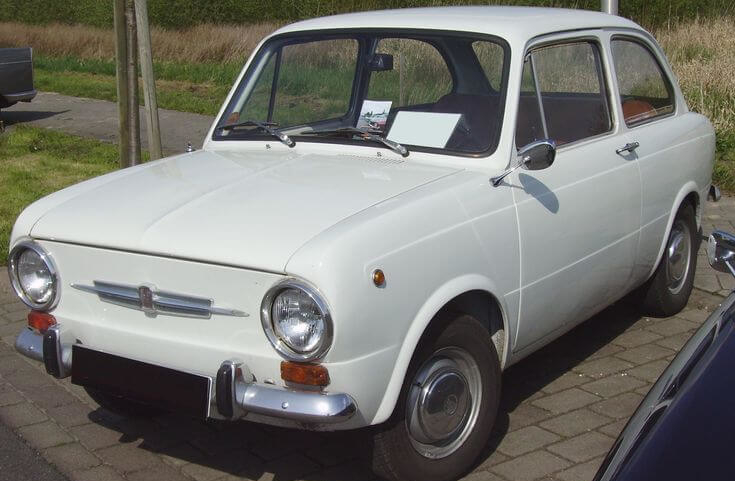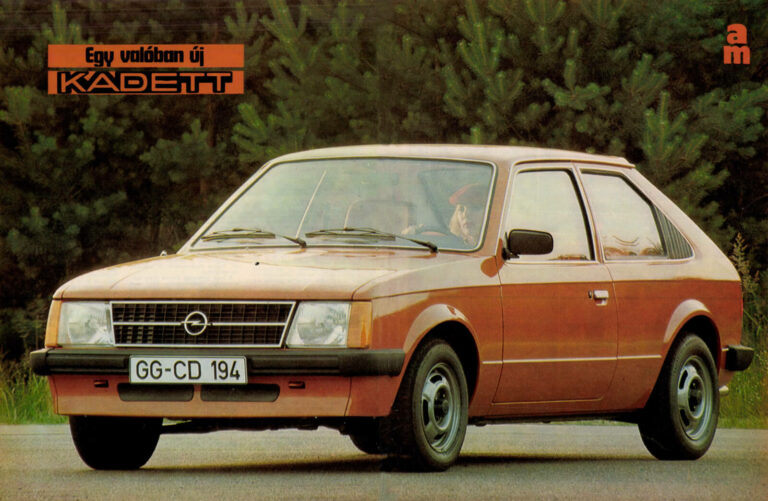1983 - The Mercedes-Benz W201 is launched,
i.e. the 190
February 1983presented in the Car Enginepublished in December of the previous year Mercedes-Benz W-201-type, more commonly known as the 190-est.
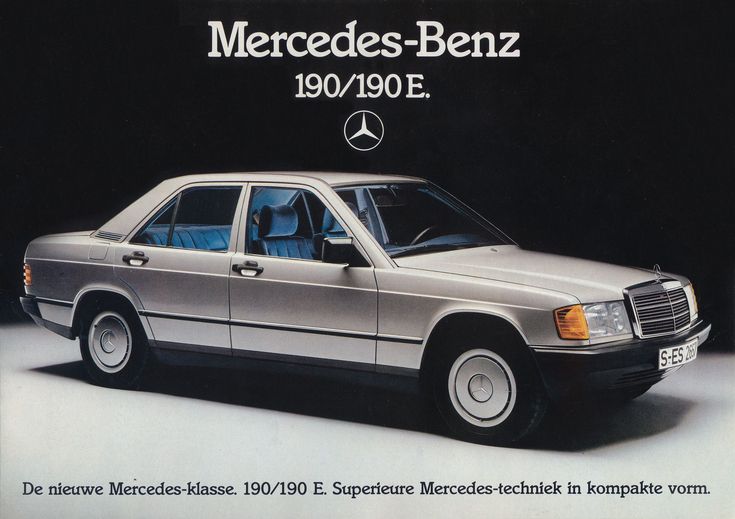
image source: pinterest / MuzikMachineZ & CarZ & SneakerZ
When the car was first introduced in December 1982, it didn't seem particularly revolutionary. The new compact, mid-size sedan, which was positioned below the E, S and SL-Class, has since become a milestone in the Mercedes-Benz model portfolio, laying the foundations for the later C-Class. Its lines, with a contoured wedge shape courtesy of designer Bruno Sacco, were a distinctive Mercedes-Benz signature. It was the debut of the multi-link rear suspension (five per wheel) and the innovative use of materials (and smaller dimensions) meant that the car, weighing a total of 1,180 kg, had extremely good fuel consumption figures.
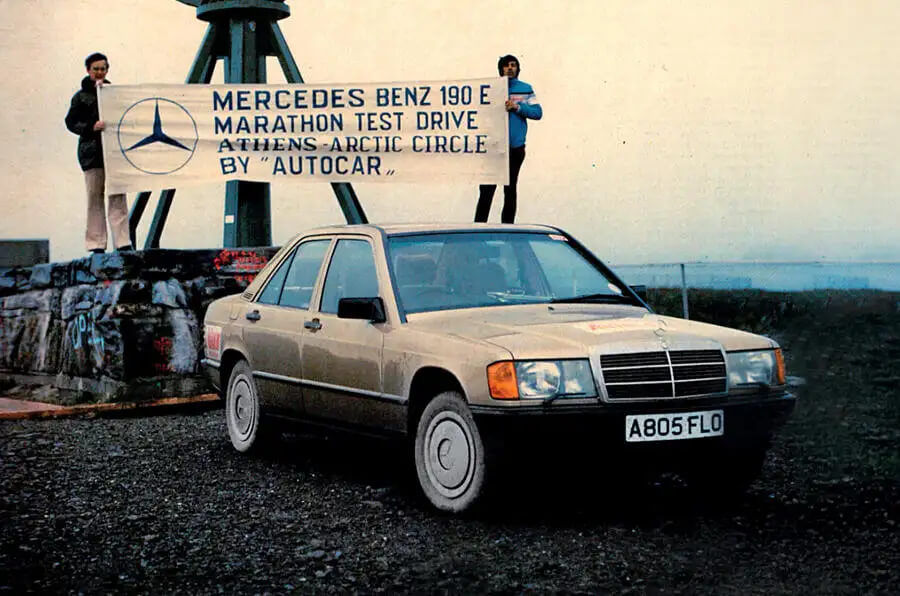
image source: autocar.co.uk
Production started with the 190 and 190 E models, followed by the 190 D and 190 E 2.3-16 in 1983 and 1984 respectively (and several more versions later). The first two petrol models described in this article were powered by the M-102 engine used in the Mercedes-Benz 200 (W123) introduced in 1980. For the 190, engine power was reduced from 80 kW to 66 kW by reducing the engine size and using intake and exhaust manifolds, a modified camshaft and smaller valves. The 190 E engine produced significantly more power than 90 kW thanks to the use of petrol injection. This was the first time that Mercedes-Benz engineers had used the Bosch KE-Jetronic injection system, which gave the compact 190 E a top speed of up to 195 km/h and "Mercedes-like boost".
In just over ten years of production, 874,668 cars were built.
It's exciting, interesting to read these lines after more than forty years, and knowing the full history of production Károly Lovász from the pen. Below is a full transcript of the 1983 article, and in the gallery at the end of this post you will find high-resolution images of the original article.
♠

A search of the automotive literature reveals that after World War II, Daimler-Benz first produced a modern chassis with a petrol engine of less than two litres in 1953. A modified version rolled off the assembly line at Sindelfingen in 1960. The model of the time, which was also very popular in Germany, was designated 180 and had an engine capacity of 1,767 cc, while the later version had 1,897 cc. The diesel version in this category was produced in 1954. Then, as the years went by, Mercedes started to produce cars with larger and larger bodies and engine displacements.
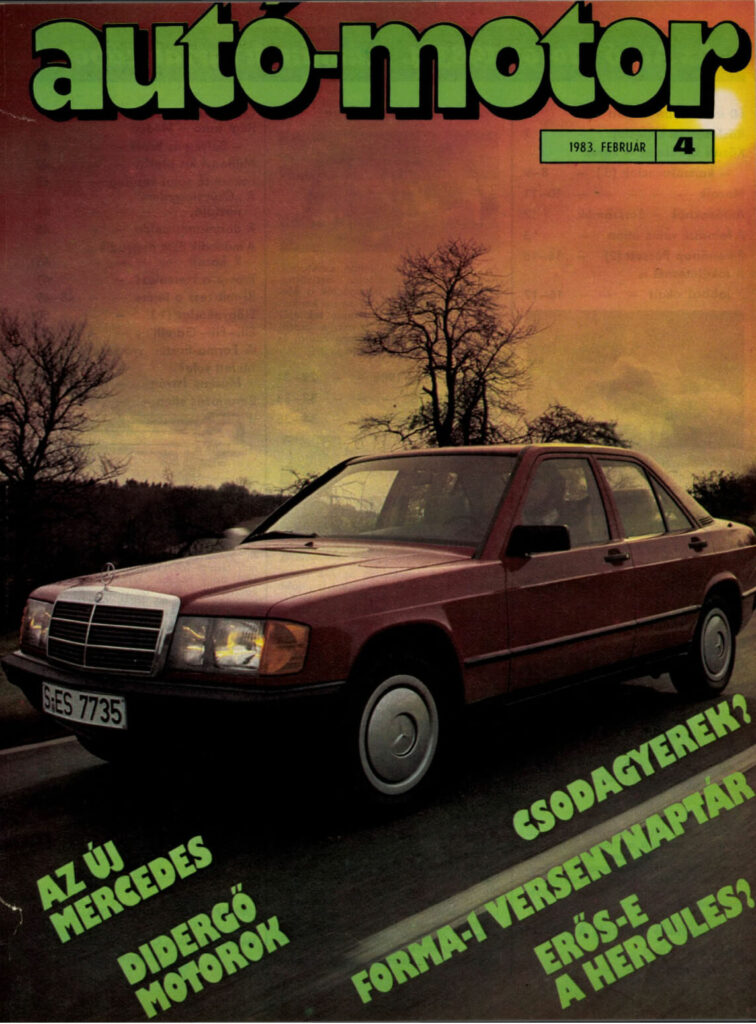
The production of the - relatively - small cars was abandoned after a while and then discontinued. While the wagon rolled smoothly. there were no particular problems with the production process. But after a while there was a noticeable decline in the love and demand for Mercs. Well, not that the factory was threatened with bankruptcy, but it had to face up to the rapidly increasing competition and declining purchasing power. Competitors' models under two litres were coming off the production lines, driving many a Merci enthusiast away from the popular brand. The factory urgently needed to take what had become a bumpy road and produce a vehicle with a displacement of less than two litres that could compete with the 'rivals' in terms of price, quality and comfort.
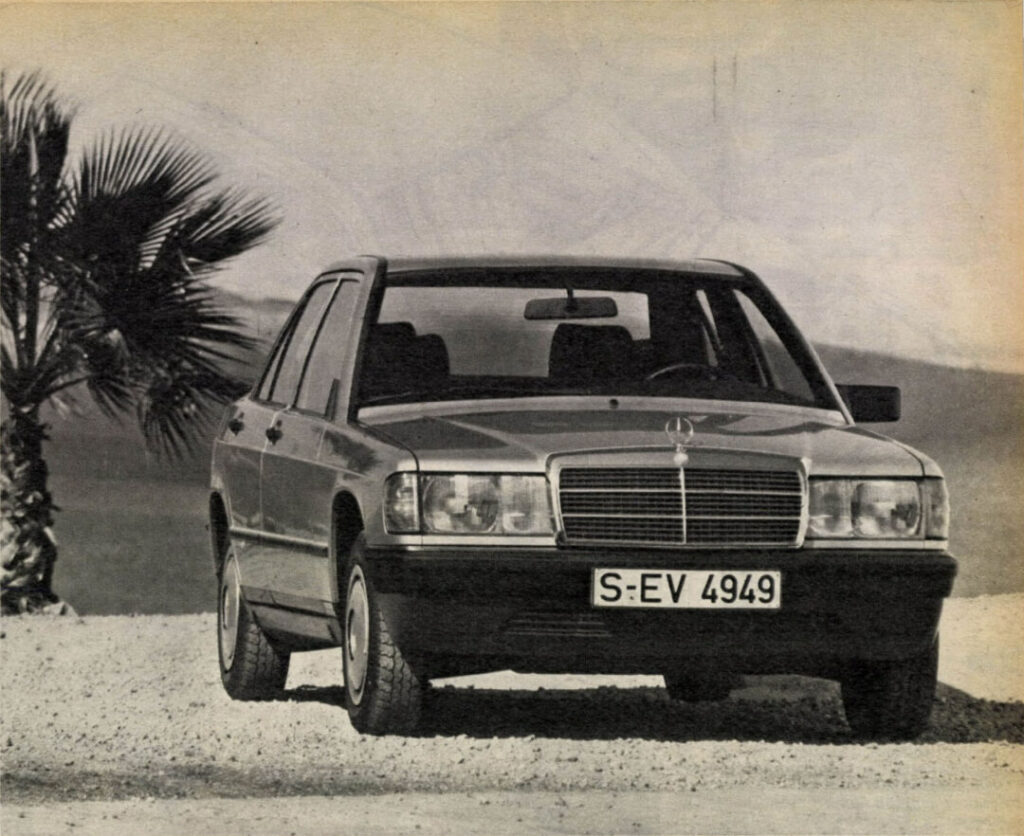
Preparations were carried out in secret for several years until the company's executives gave their blessing for the final form to be produced. A foreign trade journal had this to say: "If the factory puts the now legendary star on the radiator grille, the car can only be the best." Well, it seems that this statement is not an exaggeration, as the experts are unanimous: "The new 190 has the quality you expect from a Daimler-Benz!"
The interesting thing is that the results of one or two tests do not confirm this.
Very expensive car
The design of the new 190 started in 1977. It cost nearly a billion marks to complete the programme before the first example was built. Production of 100,000 cars a year was planned, but the plant in Bremen, which will come on stream in the middle of this year, will allow further growth.
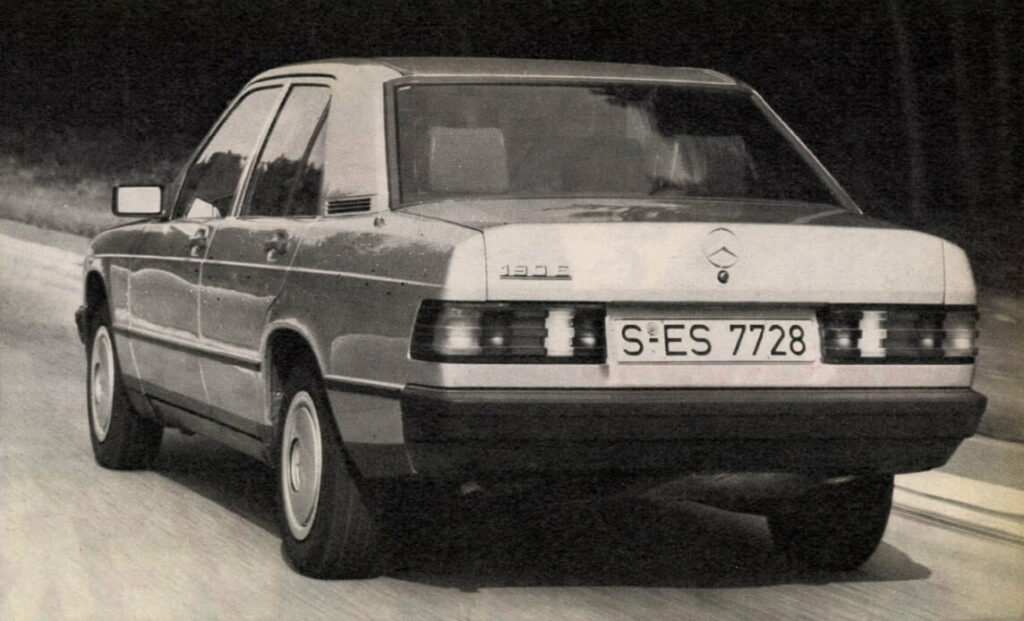
The 190 comes in two versions. The carburettor engine has 4 cylinders and a displacement of 1997 cm³. Power output is 66 kW (90 hp). It accelerates from zero to 60 km/h in 13.2 seconds. Top speed is 175 km/h. Fuel consumption: at 90 km/h: 6.5; at 120 km/h: 8.4; and in town: 10.7 litres. Vehicle weight: 1080 kilograms. Boot capacity: 410 litres. Length: 4.42 m; width: 1.67 m; height: 1.38 m.
The lettering on the 190 E model stands for petrol injection. The KE-Jetronik system from Bosch has significantly increased the power of the original engine, which on this car is 90 kW (122 hp). It accelerates from zero to 60 km/h in 10.5 seconds and has a top speed of 195 km/h. Fuel consumption of the E-type: 6.4/8.3/10.3 litres. The two engine types consume 0.4 less on average when fitted with a five-speed gearbox.
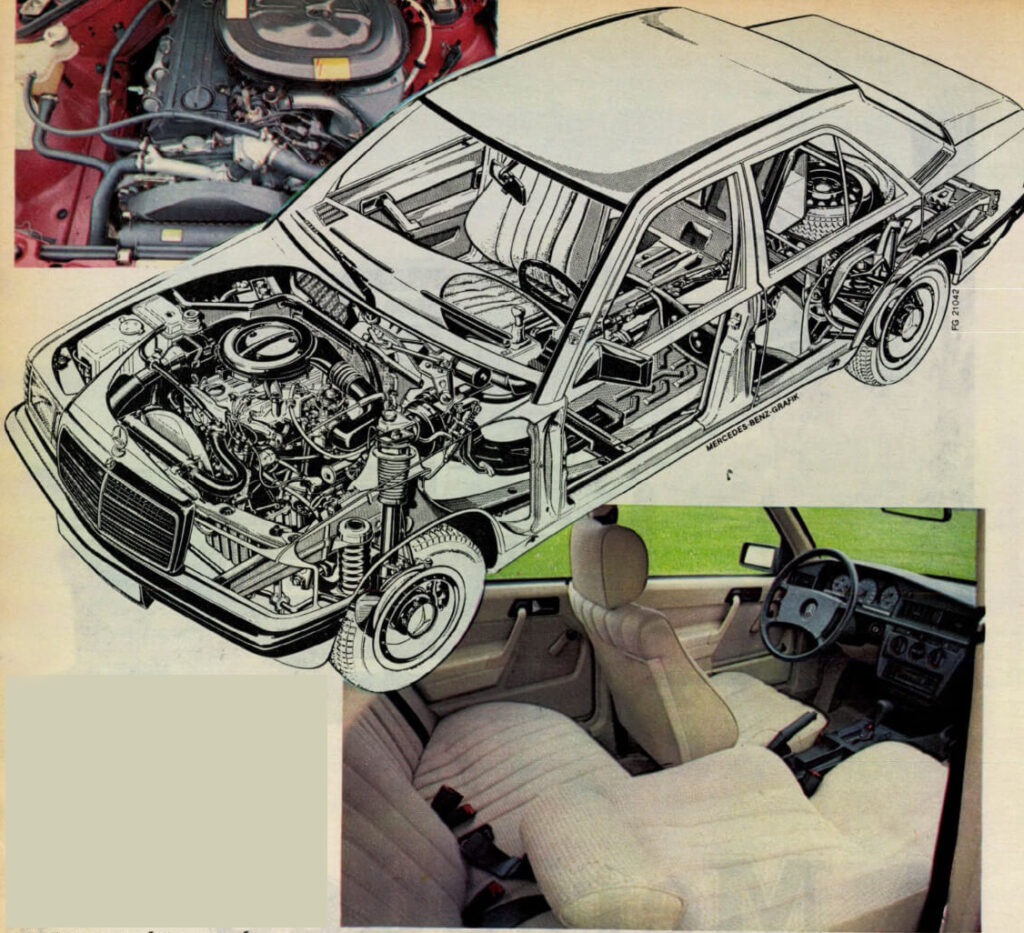
The Mercedes 190 is rear-wheel drive. This concept is somewhat surprising, since many well-known car manufacturers have already opted for front-wheel drive. The attitude of Daimler-Benz, which says it does not want to hear anything about front-wheel drive, is interesting. They keep the engine at the front and the wheel drive at the rear. It is worth noting that BMW is also sticking to the traditional production method.
The designers have created a completely new rear bridge and suspension system - never used before. In all road conditions, the rear end is extremely stable and the suspension is excellent. The 190 is equipped with a 4-speed manual gearbox. But there are also cars with a 5-speed or automatic (4-speed) gearbox. Of course, you have to pay extra for this. Although the steering is acknowledged to be excellent, and the road holding is also good, the 190 is also available with power steering. Well, of course, that's an extra expense.
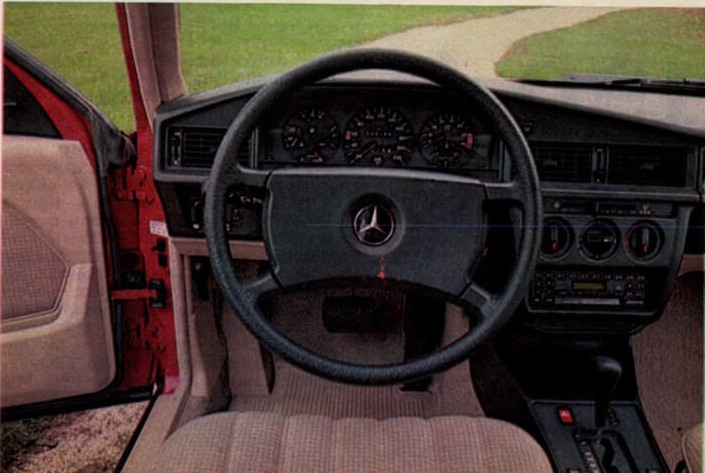
Daimler's prototype has covered 5 million kilometres in tests. Several changes had to be made to the original concept. The side windows, for example, initially got dirt easily, but various modifications were made to eliminate this. The interesting thing about this operation is that, against the will of the engineers, the car's air resistance was also improved. Although there are cars in the mid-size range with better drag coefficients than the Mercedes 190, the 0.33 cw value is a big improvement.
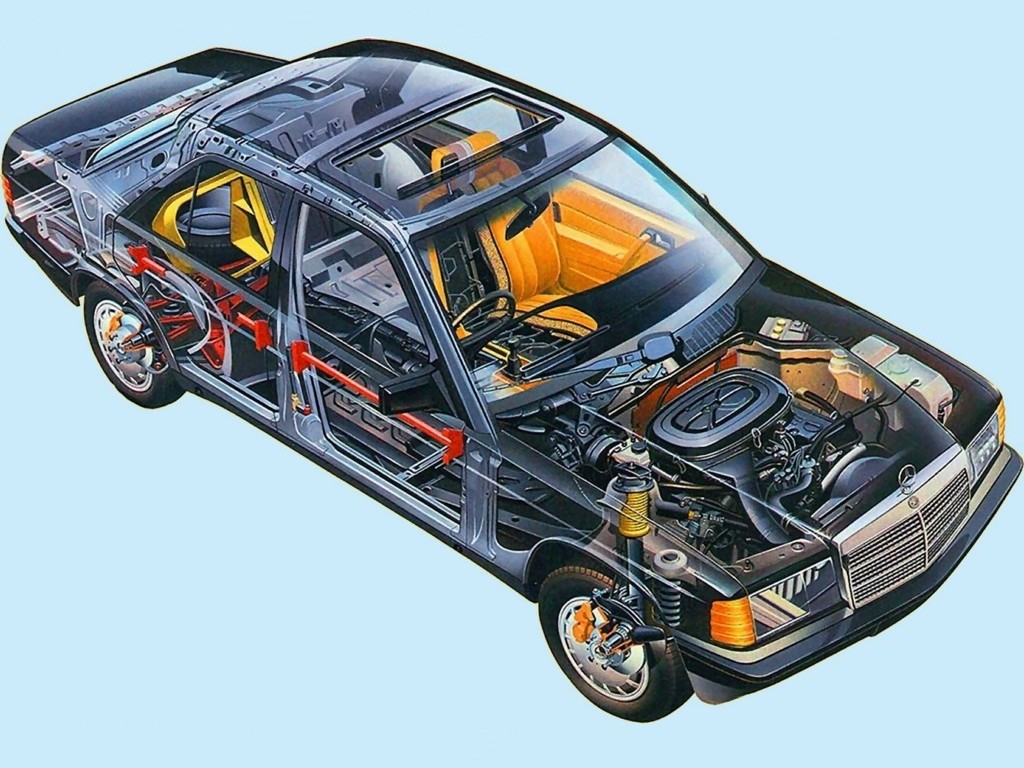
Image source: autoevolution.com
The opinions so far
The 190 has been tested by a number of experts. Their observations so far are summarised below:
- Bodywork: good. Excellent shape, easy to get in and out of the car. Easy to operate door handles. Excellent visibility, new type of wiper cleans well. On the downside: the edges of the rear bumpers don't reach the wheel cut-outs.
- Interior: adequate. Although the cabin looks comfortable, it is not. There's little space between the passenger's head and the roof cushion, for example. The gimbal box is very large, and its design is not the most perfect. The front seats are high, but this results in good visibility.
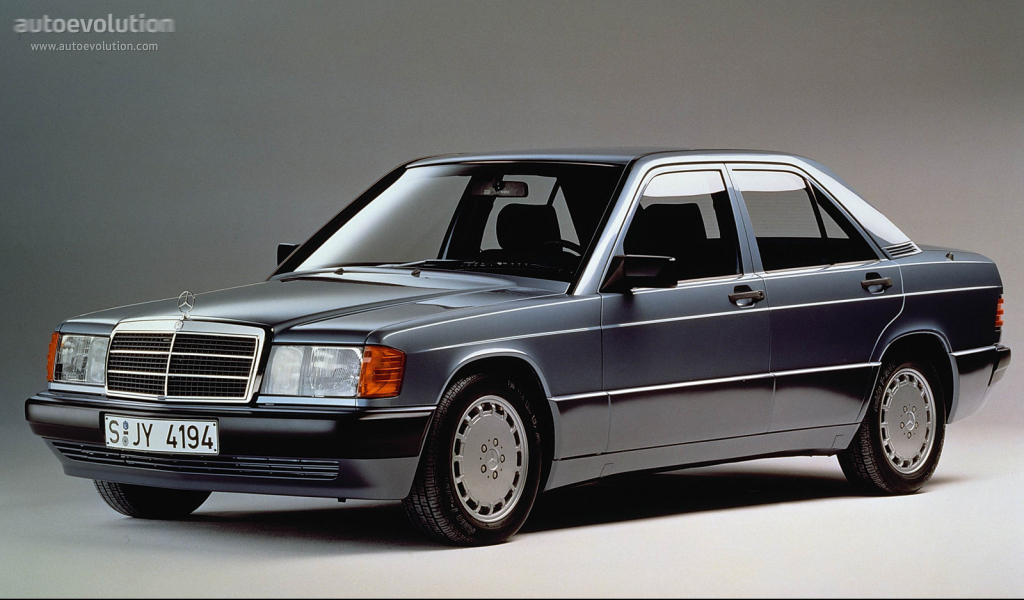
Image source: autoevolution.com
- Boot space: adequate. Although the capacity is 410 litres, which is not small, it is larger than competing vehicles. The Audi 80 has 435 litres, the VW Santana 440 and the BMW 320 425.
- Internal finish covering: adequate. And a plus compared to other types.
- Engine: good. Powerful, extremely quiet and smooth running. Excellent idle, you hardly notice the engine is running. You can feel the power when you step on the accelerator. It's easy to handle the stick shift lever, to change gears.
- Road holding: very good. The new rear bridge solution is excellent. Easy steering, stable road holding. Less sensitive to crosswinds.
- Comfort: good. Excellent suspension, seat design. Cooling and heating are impeccable.
- Handling: very good. Excellent views to the front, rear and side. The switches are easy to access. In summary: everything is within easy reach.
- Outside: good. Immaculate paint and varnish. The plastic accessories fit well to the plates.
So much for the comments so far. I am sure that both positive and negative comments will be added over time. The factory also plans to launch a diesel version of the 190 in the future. There is even talk of producing a 1.6-litre petrol engine. Already used on the S models, there is also talk of installing air conditioning and anti-lock brakes on this model.
Károly Lovász

